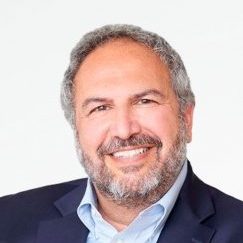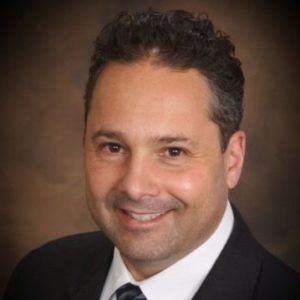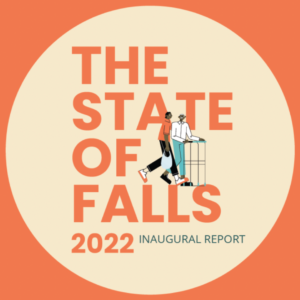How the Senior Care Industry Stands to Benefit from the Gig Economy

John Shagoury, President and Chief Operating Officer, IntelyCare
The healthcare industry faces ongoing staffing challenges and a nurse shortage, making staff acquisition and retention top priorities of most senior care facilities. While it might seem ideal to fill vacant positions with full-time, long-term staff, what if the solution rested with the gig economy?
The gig economy, which refers to the non-traditional workforce, can encompass freelancers and independent contractors, as well as those who seek short-term contracts instead of more permanent arrangements. While hard data on just how many people operate as gig workers isn’t yet available, the Gig Economy Data Hub estimates that between 25 and 30 percent of workers in the United States may use gig work as their primary or secondary source of income.
With gig work growing in popularity, embracing this non-traditional employment model could help senior care facilities to fill vacant positions – and facilities can benefit from it in other ways, too.
How Gig Workers Can Solve Staffing Issues
Many facilities are already seeing success by hiring gig-based workers. John Shagoury, President and Chief Operating Officer at IntelyCare, notes that local mom-and-pop staffing agencies that haven’t pivoted to utilize gig workers aren’t able to keep up with the senior care industry’s staffing demands. “Our approach at IntelyCare is different,” he explains. “We use a mobile app, but we do a lot to recruit and credential nurses, and we use a lot of data science behind our app. Our model supports the gig economy.”
Shagoury explains that traditional agencies require nurses to commit to a minimum number of shifts per month, as well as shifts on certain days or at certain times. “We don’t require a minimum. Nurses can work as often as they want, and they don’t have to work weekends. We’ve been able to increase the size of the per diem staffing workforce by as much as 20%,” Shagoury explains. “These are people who have full-time jobs, who are credentialed, and who are looking for extra hours, but a traditional agency model doesn’t work for them.” Many of those workers are nursing assistants, registered nurses, and licensed practical nurses.
With the gig economy becoming more popular, it’s important to understand why workers are opting for this non-traditional employment. Shagoury believes that multiple factors are contributing to this shift. He believes that younger generations of workers ages 25 to 40 are particularly looking for more flexibility and an improved work-life balance. “In a gig model like this, the rates for per diem ten to be higher than a full-time person because of the needs that they’re filling,” he explains. The flexibility, pay, and work-life balance of gig work can be appealing, and caregivers and nurses who pursue this model can work as much or as little as they want.
How Senior Care Facilities Benefit
Senior care facilities that hire gig workers stand to benefit in multiple ways. Shagoury notes that when facilities need to fill vacant shifts and are short of staff, they issue an overtime request. If their current staff don’t fill enough shifts, then the facility can either require mandatory overtime or use an outside firm to source additional employees.
“Mandatory overtime drives burnout, which creates turnover with full-time staff,” says Shagoury. “A facility needs to rely on a firm where they can get consistent quality, with people who understand the kinds of skill levels the facility needs, and who can quickly fill those shifts. Really, it’s the consistency of relationships that I think is the most important.
How to Implement the Gig-Based Staffing Model in Your Facility
If you’re ready to hire gig-based workers for your senior care facility, Shagoury stresses the importance of picking the right agency as your partner. He explains that IntelyCare staff are all W-2 employees, and that IntelyCare provides all workers with workman’s comp insurance. It’s important to ensure that any staff you hire are properly insured to protect your facility against liability vulnerabilities.
Shagoury also notes that picking the right agency will provide quality of care and consistency. You’ll also be paired with gig workers who tend to show up. “We’ve found that there may be opportunities to work in 12 to 14 facilities in the area, but our gig workers tend to gravitate toward the two or three facilities they like working at the best,” says Shagoury. “Our model allows us to facilitate consistency even though these workers aren’t employees at the facility.
He also stresses the importance of being it able to gig workers to find work when they want it. “It’s not just a question of putting up an app and displaying a shift. At IntelyCare, we invest in the data science behind the scenes to understand what each nurse is all about, where they like to work, and when they like to work. We create matching algorithms to show the opportunities that they’re most likely to take. They can quickly log onto the app and find two to three shifts they know will work for them.”
Shagoury highlights the fact that the nursing shortage will only continue to get larger. Baby boomers in their sixties are starting to age into senior care, and they’re living longer. Staff who are covering for extra duties and understaffed shifts face burnout, and that burnout will get worse if facilities don’t find staffing solutions. “The work model of the future is going to focus more on the gig economy,” states Shagoury. Now is the time for senior care facilities to embrace those gig workers.

Paige Cerulli is a contributing writer to i Advance Senior Care.
Related Articles
Topics: Facility management , Featured Articles , Information Technology , Technology & IT











